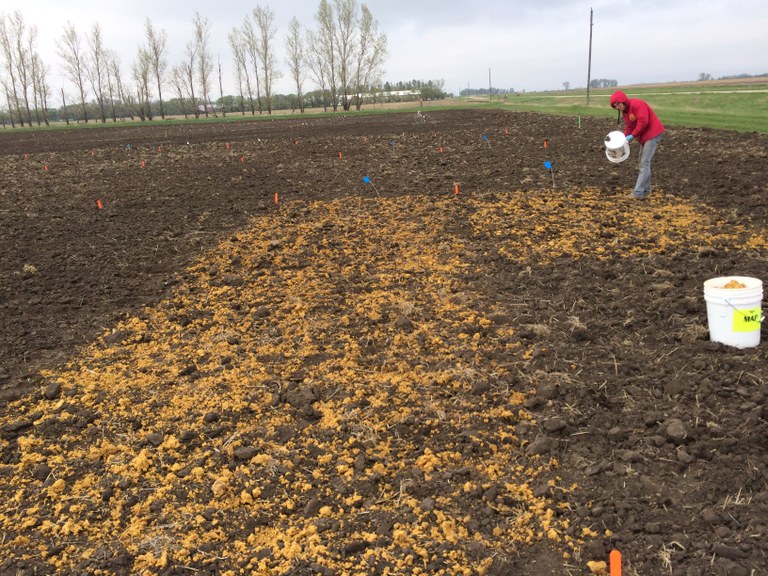Distillers grains impacted yields of corn and spring wheat, when used as a source of P
Introduction:
Condensed distillers solubles (CDS, sometimes referred to as “syrup”) and wet distillers grains (WDG) are co-products of ethanol production from corn. CDS, in particular, is usually produced in excess of demand as feed for the livestock industry in North Dakota. In 2016, a study was conducted for the second consecutive year with corn, to test the effect on yields, when P was applied at 0 (check), 40, 80, 120 lbs P2O5/ac with CDS, TSP, and WDG as sources of P. A wheat study also assessed the same treatments on spring wheat, but without the 120 lbs rate. Urea N was applied to TSP and check plots only, at recommended N rates. No other fertilizer was applied.
Results
- In 2016, corn yield increased by about 4 bushels on average as rates of P increased by 40 lbs.
- Wheat yield increased significantly, by 2 bushels from 0 to 40 lbs P, and by 5 bushels at 80 lbs P.
- Corn yield from WDG treatment was significantly higher than CDS, TSP, and check treatments; meanwhile in 2015, yield from CDS was significantly higher than WDG and TSP treatments (Figure 1).
- Wheat yield also increased significantly with WDG treatment compared to TSP. Yield from CDS treatment was not different from either WDG and TSP (Figure 2). Grain protein was significantly higher with WDG (16.3%) than with CDS syrup (16.1%) or TSP (16.1%).
Main observations
- WDG, increased corn and wheat grain yield compared to TSP and check in 2016. CDS, increased corn yields compared to TSP and check in 2015. It is likely that because N from urea was applied with TSP and check only, the effect of other nutrients, like sulfur, found in distillers grains may have enhanced the CDS and WDG plots.
- It is also probable that yield gains from CDS and WDG could be due to enhanced microbial activity. It is not evident why yields from WDG treatment were better than from CDS in 2016, but not in 2015.
- These results indicate that there are nutrient benefits to crops from using distillers grains as sources of crop nutrients.
- Preliminary assessment of net returns to farmers suggests that only producers farming within close proximity to ethanol plants are more likely to benefit from using distillers grains as fertilizer sources because of transportation costs. As of early 2016 condensed distillers solubles cost much less ($5 per ton) than wet distillers grains ($30 per ton), and cost about $25 to pay an applicator to haul and apply within 25 miles from an ethanol plant.

Jasper Teboh, Ph. D.
Soil Scientist


